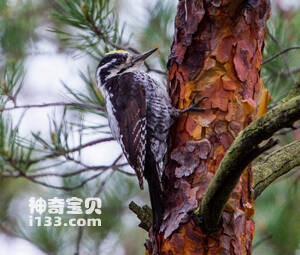
The three-toed woodpecker is called Eurasian Three-toed Woodpecker in English. It is a small bird with 8 subspecies.The three-toed woodpecker is a typical forest bird. Except for the breeding season, it often acts alone. In the late breeding period, it also forms a family group. It is active in the...

White-winged Woodpecker is a small bird with no subspecies.White-winged Woodpecker is a resident bird, often acting alone, and in pairs during the breeding season. It mainly feeds on various insects such as longhorn beetle adults and larvae, coleoptera insects, click beetles, ants, bark beetles, jew...
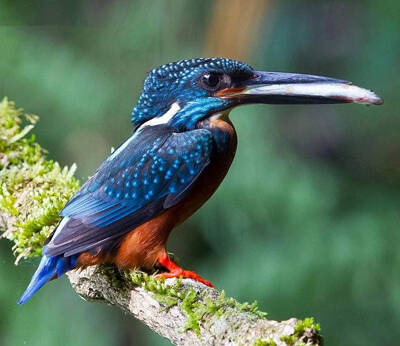
Blyth's Kingfisher is a resident bird. It is timid and often acts alone. It often lives on low branches of trees on the shore or branches extending out of the water. They often fly over the water to look for food. Usually they live alone on branches or rocks near the water, waiting for opportuni...
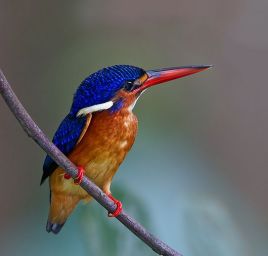
Blue-eared Kingfisher is a small bird with 6 subspecies. There is only the Yunnan subspecies in China, which is distributed in Mengla, Yunnan. There are few records of its ecological biology in China. In 1960, the famous scientist Professor Zheng Zuoxin and others caught one by a river in Mengla.The...
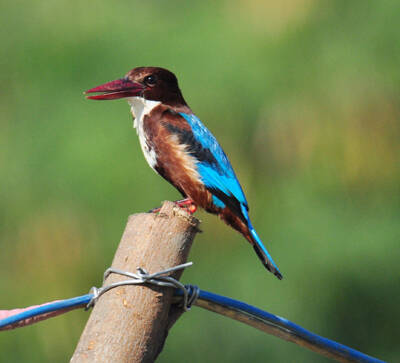
White-throated Kingfisher is a medium-sized bird with 4 subspecies.White-throated Kingfisher often moves alone, often standing on dead branches of trees or stones by the water, and sometimes standing on power lines, often looking at the water for a long time, waiting for prey. It flies in a straight...
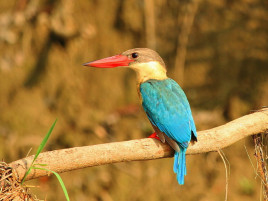
Stork-billed Kingfisher is a medium-sized bird with 13 subspecies.The similar species of Stork-billed Kingfisher, the Blue Kingfisher, is smaller in size and bill, with a black head; the chin, throat, upper chest and collar are white, and the wing coverts are black. When flying, there are white wing...
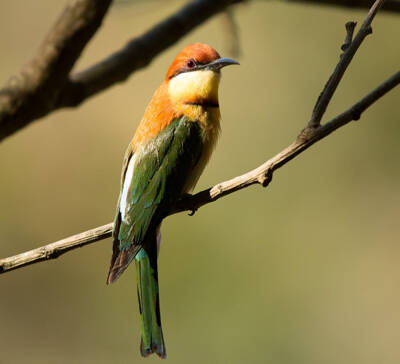
Chestnut-headed Bee-eater, also known as Chestnut-headed Bee-eater, has 3 subspecies.The chestnut-headed bee-eater migrates to southeastern China in summer, living in hills or woodlands. It mostly flies and hunts in the air, accompanied by a trilling call, and sometimes stands on the top branches of...
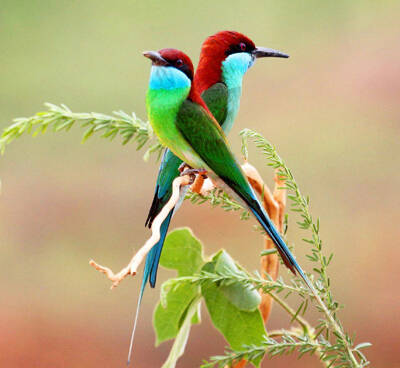
Blue-throated bee-eater, also known as Blue-throated bee-eater, has 2 subspecies.Blue-throated bee-eaters often move alone or in small groups, often flying in the sky to find food, and often resting on trees or wires.The migration time of the blue-throated bee-eater is from April to May in spring an...
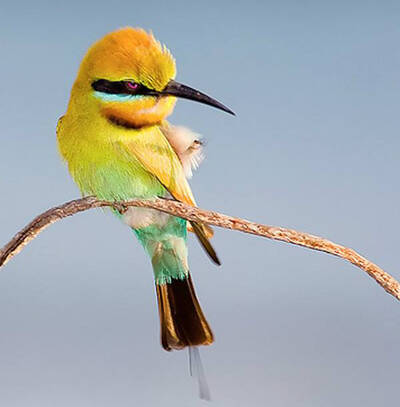
Rainbow Bee-eater, also known as Rainbow Bee-eater, is a medium-sized green bee-eater with no subspecies.Rainbow Bee-eater mainly preys on bees and wasps. Other prey include butterflies, moths, damselflies, dragonflies, beetles and most flying insects. They mostly forage in flight, quickly swooping...
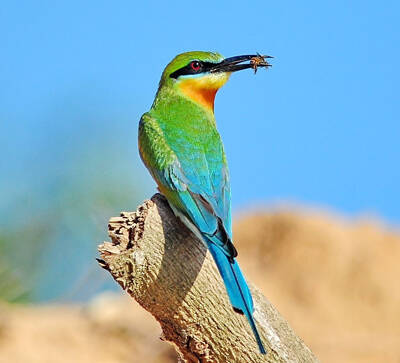
Blue-tailed Bee-eater, no subspecies.Blue-tailed Bee-eater is a resident bird in southwestern Yunnan and Hainan Island, China, and a summer migratory bird in other areas. It migrates in April-May and leaves in September-October.Chestnut-throated bee-eaters usually move in groups of several to dozens...
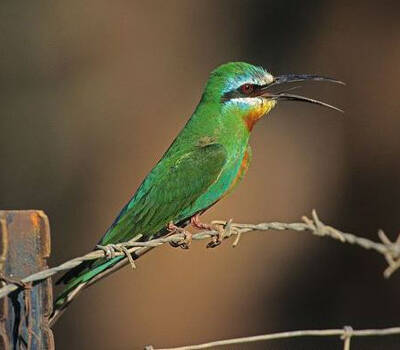
Blue-cheeked Bee-eater, also known as Blue-cheeked Bee-eater, has two subspecies.At dusk or after the rain, large groups of blue-cheeked bee-eaters will fly in the air to chase flying insects, especially when there are breeding termites flying around. The sound of the upper and lower jaws beating ca...
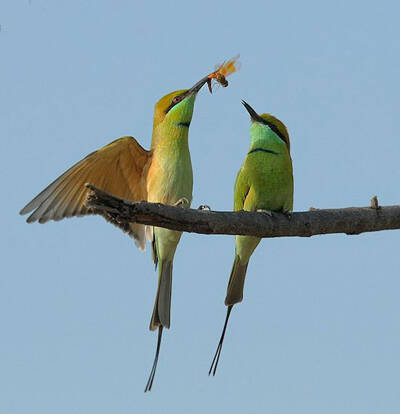
Green Bee-eater, also known as Green Bee-eater in English, is a small bird with 9 subspecies.The green-throated bee-eater is a resident bird that moves in small groups. It is often seen perching on flying insects and suddenly rushing into the air to bite them. After catching the flying insects, it w...
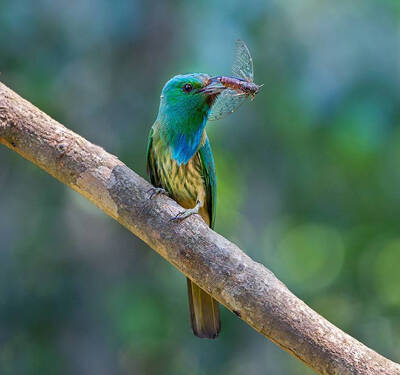
Blue-bearded Bee-eater is a green forest-dwelling bee-eater with two subspecies.Blue-bearded Bee-eaters live in pairs and seem to be inactive for most of the day. They live high up in the trees, in the shade of leaves, or in the sun near the canopy. They stand next to the inflorescences and will pec...
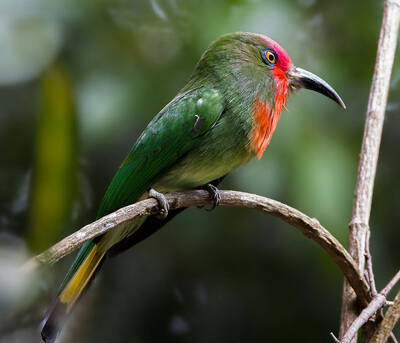
Red-bearded Bee-eater, no subspecies.Although Red-bearded Bee-eater belongs to the genus Nyctyornis, their diet is very similar to that of the bee-eaters of the genus Merops. However, their hunting behavior is completely different. Red-bearded Bee-eaters hunt alone or in pairs. They stand on lookout...

The wreathed hornbill is called wreathed hornbill in foreign language, and has 2 subspecies.The wreathed hornbill often moves in small groups of 3 to 5. The call is monotonous, hoarse, and like a dog barking, and sometimes it can also make a low two-syllable sound. It appears to be rather clumsy whe...
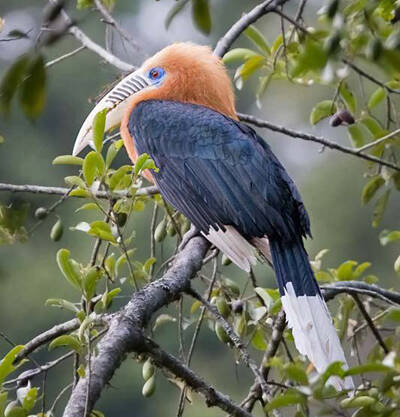
Rufous-necked hornbill is a large bird with no subspecies.Rufous-necked hornbill nests in tree holes. They often move in pairs or small groups of more than 10. They mainly feed on fleshy wild fruits such as banyan fruit.The brown-necked hornbill is a resident bird. Both males and females make a soft...
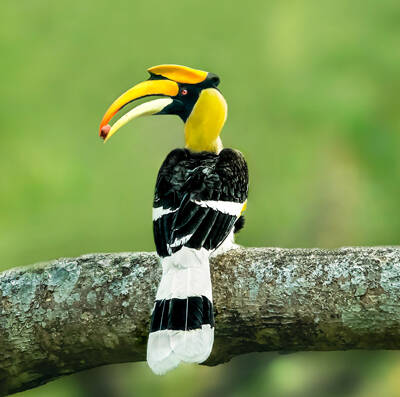
Great Hornbill has two subspecies.Great Hornbill often moves alone during the breeding season, and likes to move in groups on tall banyan trees during the non-breeding season. When the fruits are ripe, most hornbills feed in one place until all the food is eaten. They often fly in groups, one after...
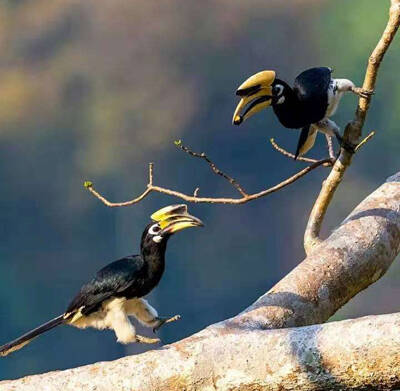
The Malabar pied hornbill is called Malabar pied hornbill in English, and has 2 subspecies.The Malabar pied hornbill is a resident bird. It often moves in groups except during the breeding season. It often lives and moves in trees, and sometimes forages on the ground. The call is "Gak, Gak, Gak...
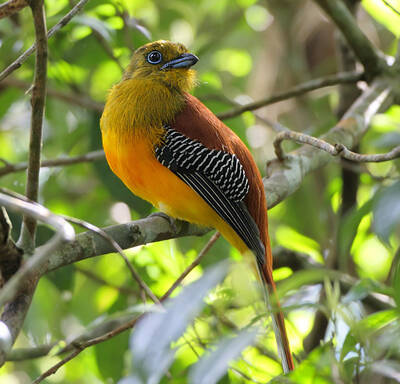
Orange-breasted Trogon, also known as Orange-breasted Trogon, has 5 subspecies.Orange-breasted Trogons often move alone or in pairs; they are arboreal, either climbing on the top branches of small trees to eat wild fruits, or standing quietly on tree branches waiting for an opportunity to pounce on...
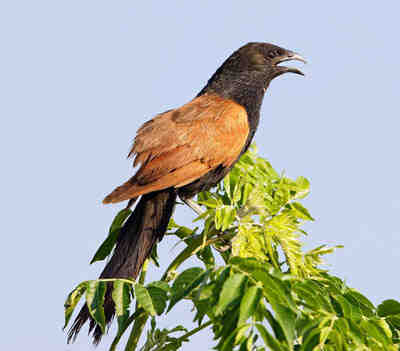
Lesser Coucal is a medium-sized bird with three subspecies.Lesser Coucal is a resident bird, often moving alone or in pairs. It is smart and secretive, and will immediately run into dense bushes or grass if it is slightly disturbed. It mainly feeds on insects and other small animals such as locusts,...